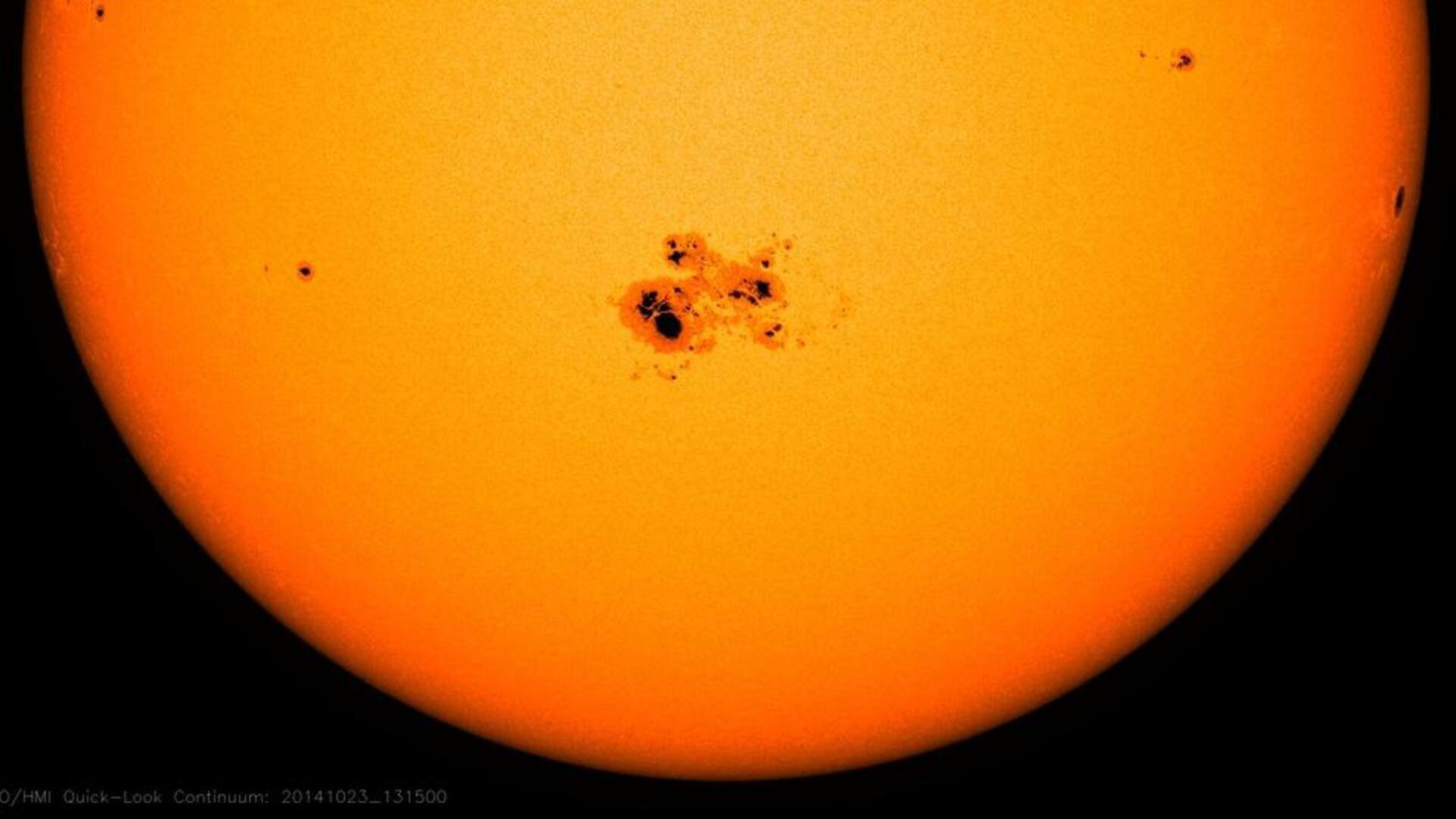
NASA Perseverance identifies sunspot that could soon point toward Earth
What's the story
NASA's Perseverance rover, which is currently probing Mars, has captured an intriguing large sunspot. As Mars is currently "orbiting over the far side of the Sun," the rover can see "approaching sunspots more than a week before we do," per SpaceWeather.com. This sunspot was spotted crossing the solar disk between August 17-20. Interestingly, the sunspot is expected to point toward our home planet "later this week," possibly bringing an increase in solar activity.
Details
Sun's magnetic field is strong at sunspots
Perseverance photographs the Sun daily to measure the dust content in the Martian atmosphere. It was during one of such routine tasks that the rover recorded the sunspot. Sunspots appear dark and are cooler compared to the rest of the Sun's surface, per NASA. In these regions, the Sun's magnetic field is particularly strong. Coronal mass ejections (CMEs) and high-energy radiation called solar flares originate from sunspots, which is why they are also called "active regions."
Information
Solar flares can interfere with navigation systems
High-energy radiation outbursts and colossal eruptions of solar plasma from sunspots can have severe consequences on Earth. Solar flares and CMEs that strike our planet could interfere with communication systems and satellites, and disrupt power grids, thereby making early detection crucial.
Objective
Perseverance is searching for evidence of life on Mars
Sungazing is just a part of what Perseverance rover does. Its actual aim is to look for signs of life on Mars and collect samples. These samples are planned to be returned to Earth via NASA-European Space Agency's joint campaign, Mars Sample Return. Currently, the rover is exploring Mars's Jezero Crater, which is believed to have hosted a vast lake and river delta billions of years ago. This makes it an ideal location for discovering potential evidence of ancient life.